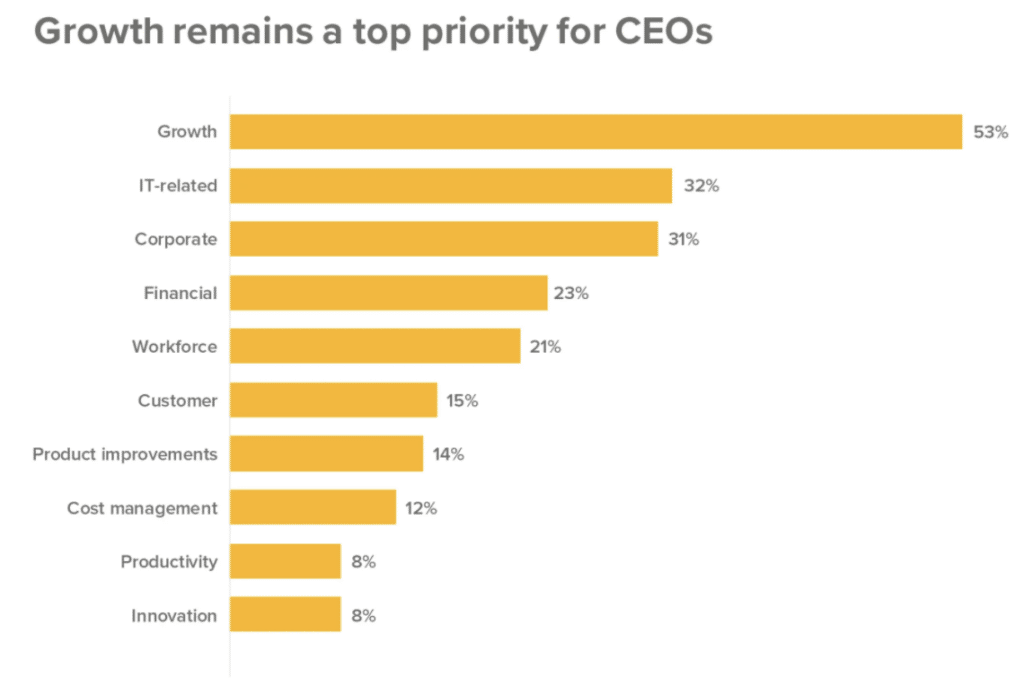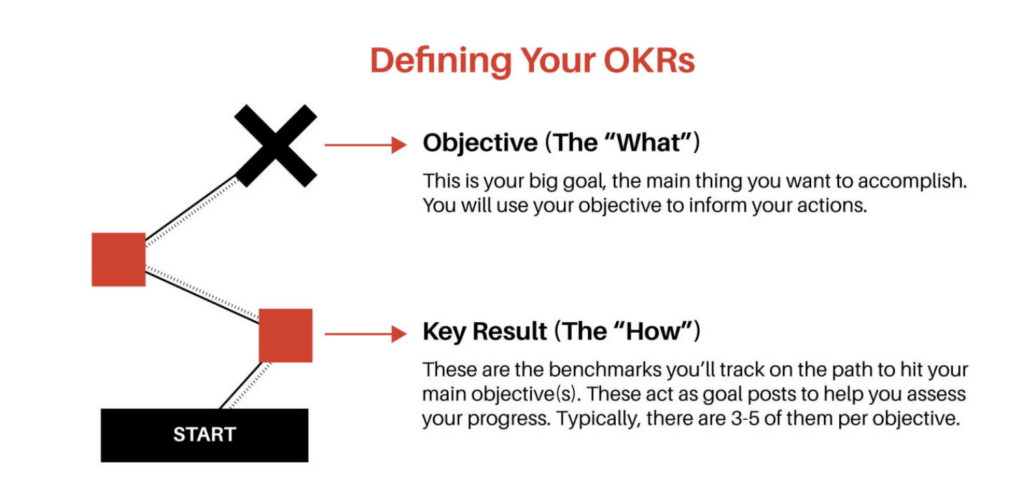When it comes to developing a growth strategy, it can be broken down into different parts among sales, marketing, and product. The focus of acquiring new customers, increasing LTV as well as referrals can seamlessly come together once a product is ready for launch with a clear GTM (go to market) strategy. In essence, the overall focus here is about growth and being able to scale quickly without sacrificing quality.
For this very reason, having a solid growth strategy and mindset that is built within the culture of your business is going to propel you ahead. Therefore, accountability, responsibility, collaboration and clear communication are all going to play integral roles as well. In fact, growth not only continues to be a focus for many CEOs, it’s also a challenge.

In today’s blog post, here’s what you can expect to learn:
- How to simplify your overall growth strategy
- How to get clear on ‘who’ you’re going after and why
- Why sales and marketing alignment are imperative for success
- How to leverage data to foster your growth initiatives
Let’s dive in…
Simplify your go to market initiatives
Having a clear understanding of the overall market size is going to help you figure out what a realistic growth plan is going to look like and how you can set goals to meet your growth objectives.

From there, you’ll be able to look at how you can position your product, what makes it unique, the challenges you’re solving, and exactly ‘who’ your product is for. Once you do this, you’ll then be able to formulate go to market initiatives that involve sales and marketing. More specifically, you’ll be able to look at how you can do the following:
- Know the channels to grow awareness.
- Know the channels that will also generate interest and leads.
- Know the entire buyer journey so that you can reduce friction and generate revenue.
- Know how to keep customers happy and get referrals.
Know your target audience
When you understand the people who are going to ‘buy’ from you and actually adopt your product, the ability to really scale that is going to be much easier than being a solution to everyone. Once you hone down your target personas, you can then work on the right messaging you’ll want to test, build out a more customized buyer journey, develop content that will nurture them into becoming customers and stay as happy customers, etc.
Next up, doing a simple competitive analysis is going to be super helpful too. This will give you insight into what your competitors are doing that’s working well and where specific gaps are that you know you can fill. You’ll also be able to see friction points that might cause potential buyers to gravitate towards competitors too.
More specifically, here are some key things to keep in mind:
- Make sure you are looking at who the decision makers are.
- Know who the influencers are.
- Know the vertical that’s driving the most revenue and has the highest LTV.
- Keep track of the feedback and objections you’re receiving from start to finish.
- Using buyer personas in an email campaign improved open rate by 2x and click through rate by 5x.
- Behaviorally targeted ads are twice as effective as non-targeted ads.
- Using marketing personas made websites 2-5 times more effective and easier to use by targeted users.
- Personalized emails Improve clickthrough rates by 14%, conversion rates by 10%, and drive 18 times more revenue than broadcast emails.
Align with marketing and sales
I recently wrote an entire blog post about how the alignment of marketing and sales can yield 209% more in revenue, which you can check out here. More specifically, here’s a quick snippet from that post that you should consider:
The pressure for sales and marketing to perform well and to play an integral role in fostering growth initiatives is something that comes with the nature of being in business. That pressure can typically snowball into something negative, where each department starts blaming the other for not doing their part.

Rather than doing this, push forward with processes that work well for both. Working in silos is outdated for both departments and creates more friction than needed. I believe one of the key things to keep in mind is that no matter if you’re in sales or in marketing, you are both working for the same company and towards a collective goal.
Here are some key processes worth considering:
- Agree on what an MQL is and what an SQL is.
- Be accountable and humble.
- Have an open feedback loop on what’s working and what isn’t.
- Implement lead scoring and agree on where the SQL threshold is and what happens if leads reach that point but are still not ready to move forward.
- Over-communicate and be supportive (this means putting your ego aside).
The most important factor with successful collaboration is that everyone is accountable and that both parties do their part. The friction between sales and marketing arises and can continue when there isn’t accountability because then it’s all about finger-pointing. In turn, this causes teams to pull apart rather than working towards the same vision and goals.
I like to use Monday to organize projects for both departments and encourage accountability. Each department can have their own section, while color-coding can help us know what campaigns are aligned. It also helps to be able to see at a glance what everyone is doing so that you can see ways that you can better coordinate your efforts together.
Data is key but not everything
As the saying goes, your tools are only as good as the people using them. If you’re not instituting the right processes to foster the data that the tools you adopt can provide, then you won’t get a ton of value.
Know what you’re tracking and how it all backs out to being impactful for the business. One of the most obvious ways to go about doing this is to lay out OKRs. This is a collective way for teams to get together and identify as well as align goals.

Here’s a specific explanation by WhatMatters:
An Objective is simply what is to be achieved, no more and no less. By definition, objectives are significant, concrete, action-oriented, and (ideally) inspirational. When properly designed and deployed, they’re a vaccine against fuzzy thinking—and fuzzy execution.
Key Results benchmark and monitor how we get to the objective. Effective KRs are specific and time-bound, aggressive yet realistic. Most of all, they are measurable and verifiable. You either meet a key result’s requirements or you don’t; there is no gray area, no room for doubt. At the end of the designated period, typically a quarter, we do a regular check and grade the key results as fulfilled or not.
Where an objective can be long-lived, rolled over for a year or longer, key results evolve as the work progresses. Once they are all completed, the objective is not necessarily achieved.
Wrapping it up
As you create and execute your growth strategy make sure you are leaving room to pivot when needed. Be stubborn about your goals but flexible about your approach. This means you’re testing and learning quickly but again, not sacrificing the overall quality of your product.
Further, keep measuring and collecting any qualitative and quantitative data points so that you know what’s working and what isn’t. That way, you are pushing for things that are driving desired outcomes versus busy work that has low value attributed.





